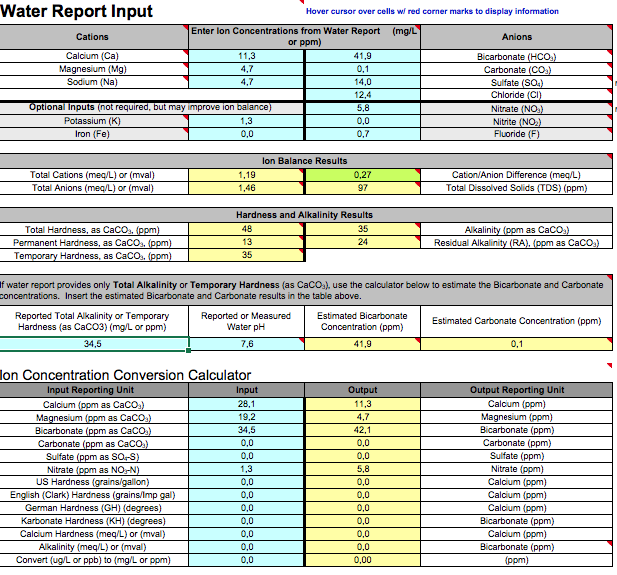I've been using Brun Water for some time, great tool. Some months ago I bought a pH meter (Hach Pocket Pro+) mainly for quick souring purposes, but also decided to take measurements during mash (room temperature, 15 minutes after dough in).
It was a big surprise when the predictions were quite off (actual measurements were almost always around ~0.2 higher than predicted).
After 2 batches of wrong predictions I decided to request a new water report (not the cheapest thing here in Brazil). The results were almost identical to the previous one.
I revisited every field of the spreadsheet and typed the updated values.
The next brew same thing happened: wrong pH prediction (Brun Water ~0.2 lower than actual).
I'm trying to track down what could be the culprit here. I'm a full volume BIAB brewer that brews almost always under 1.060 OG, so my mash thickness is quite high.
My water is high in alkalinity too.
Here is the water report input from my spreadsheet:

Any help is appreciated.
Cheers.
It was a big surprise when the predictions were quite off (actual measurements were almost always around ~0.2 higher than predicted).
After 2 batches of wrong predictions I decided to request a new water report (not the cheapest thing here in Brazil). The results were almost identical to the previous one.
I revisited every field of the spreadsheet and typed the updated values.
The next brew same thing happened: wrong pH prediction (Brun Water ~0.2 lower than actual).
I'm trying to track down what could be the culprit here. I'm a full volume BIAB brewer that brews almost always under 1.060 OG, so my mash thickness is quite high.
My water is high in alkalinity too.
Here is the water report input from my spreadsheet:

Any help is appreciated.
Cheers.


